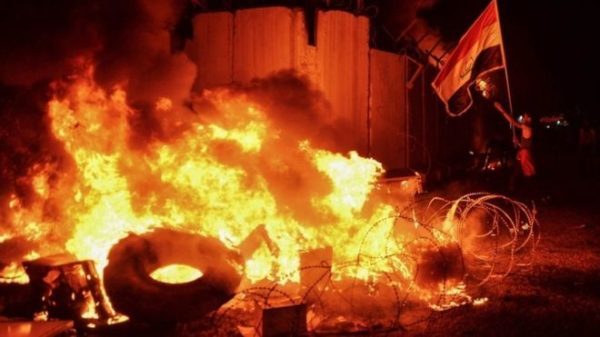Iraqi Prime Minister Adel Abdul Mahdi is to submit his resignation, his office says, after more than 40 people were killed on the bloodiest day since anti-government protests began.

Mr Abdul Mahdi’s decision comes after Iraq’s top Shia Muslim cleric condemned the use of force against protesters and called for a new government.
Nearly 400 people have been killed in protests since the start of October.
Iraqis are demanding jobs, an end to corruption and better public services.
UN Secretary General Antonio Guterres said he was “deeply concerned over reports of the continued use of live ammunition against demonstrators” and called for “maximum restraint”.
Why is Abdul Mahdi resigning?
The statement said he would present his resignation to parliament so lawmakers could select a new government.
It came after Grand Ayatollah Ali al-Sistani called for a new government.
“In response to this call, and in order to facilitate it as quickly as possible, I will present to parliament a demand [to accept] my resignation from the leadership of the current government,” the statement signed by Mr Abdul Mahdi said.
The statement did not say when his resignation would take place. On Sunday parliament will hold an emergency session to discuss the crisis.
Earlier on Friday Ayatollah Sistani said the government appeared to have been “unable to deal with the events of the past two months”.
“Parliament, from which the current government emerged, must reconsider its choices and do what’s in the interest of Iraq,” he said in remarks delivered by his representative during a televised sermon in the city of Karbala.
The ayatollah said attacks on peaceful protesters were “forbidden” and also urged demonstrators to avoid violence and “eject vandals” from their midst.
Mr Abdul Mahdi had earlier ordered an investigation into Thursday’s violence in Dhi Qar and Najaf provinces.
What’s the background?
Mr Abdul Mahdi took office just over a year ago, promising reforms that have not materialised.
Young Iraqis angered by his failure to tackle high unemployment, endemic corruption and poor public services took to the streets of Baghdad for the first time at the beginning of October.
After the first wave of protests – which began in October, lasted six days and saw 149 civilians killed – Mr Abdul Mahdi promised to reshuffle his cabinet and cut the salaries of high-ranking officials, and also announced schemes to reduce youth unemployment.
But the protesters said their demands had not been met and returned to the streets in late October. The demonstrations escalated and spread across the country after security personnel responded with deadly force.
At the end of October Mr Abdul Mahdi offered to resign if parties could agree a replacement.
What’s the latest?
On Friday large crowds attended funerals for those killed in the city of Najaf and protesters rallied in the city of Nasiriya, where most of the deaths on Thursday occurred.
Three people died in clashes between protesters and security forces in Nasiriya on Friday, Reuters news agency quoted medics as saying.
There were also reports that two protesters had been shot dead in Baghdad.
The deputy governor of Najaf has resigned, following the governor who resigned on Thursday.
What happened on Thursday?
Amnesty International’s Middle East research director, Lynn Maalouf, said there had been a “bloodbath” in Nasiriyah and accused security forces of “appalling violence against largely peaceful protesters”:
- At least 25 people died when security forces opened fire to clear bridges there. Protesters responded by torching a police station
- Ten protesters died in the city of Najaf after security forces cracked down following the burning of Iran’s consulate, and a curfew is in place
- Another four protesters died in Baghdad as protesters tried to cross a bridge towards the so-called Green Zone that hosts the country’s parliament
Why did protesters target an Iranian consulate?
Many of those taking part have expressed anger at Iran’s influence over Iraq’s internal affairs, which has steadily grown since the US-led invasion that toppled Saddam Hussein in 2003.
Protesters accuse Iran of complicity in what they see as Iraq’s governance failure and corruption.

They chanted “Iran out of Iraq” as Iran’s mission in Najaf burned. The city is the seat of Iraq’s Shia religious authority and the location of the revered Imam Ali shrine, where the son-in-law of the Prophet Muhammad is buried.
It is the second attack on an Iranian consulate in Iraq this month after an office in the Shia holy city of Karbala
Leave a Reply
You must be logged in to post a comment.